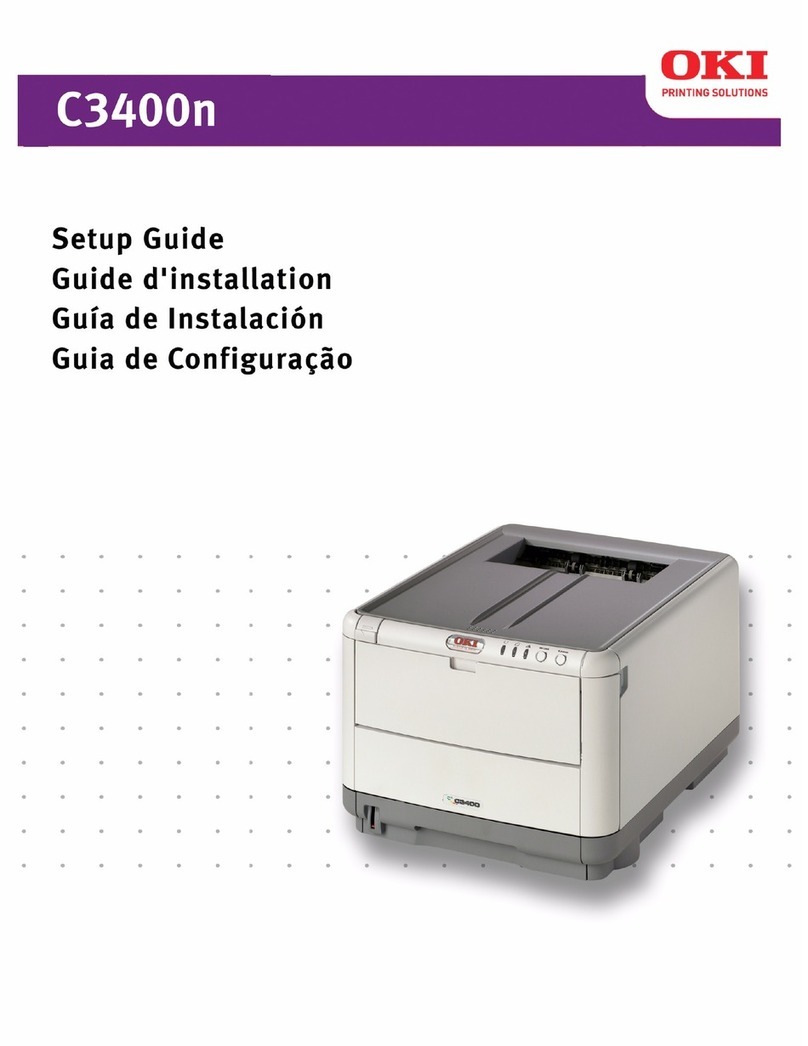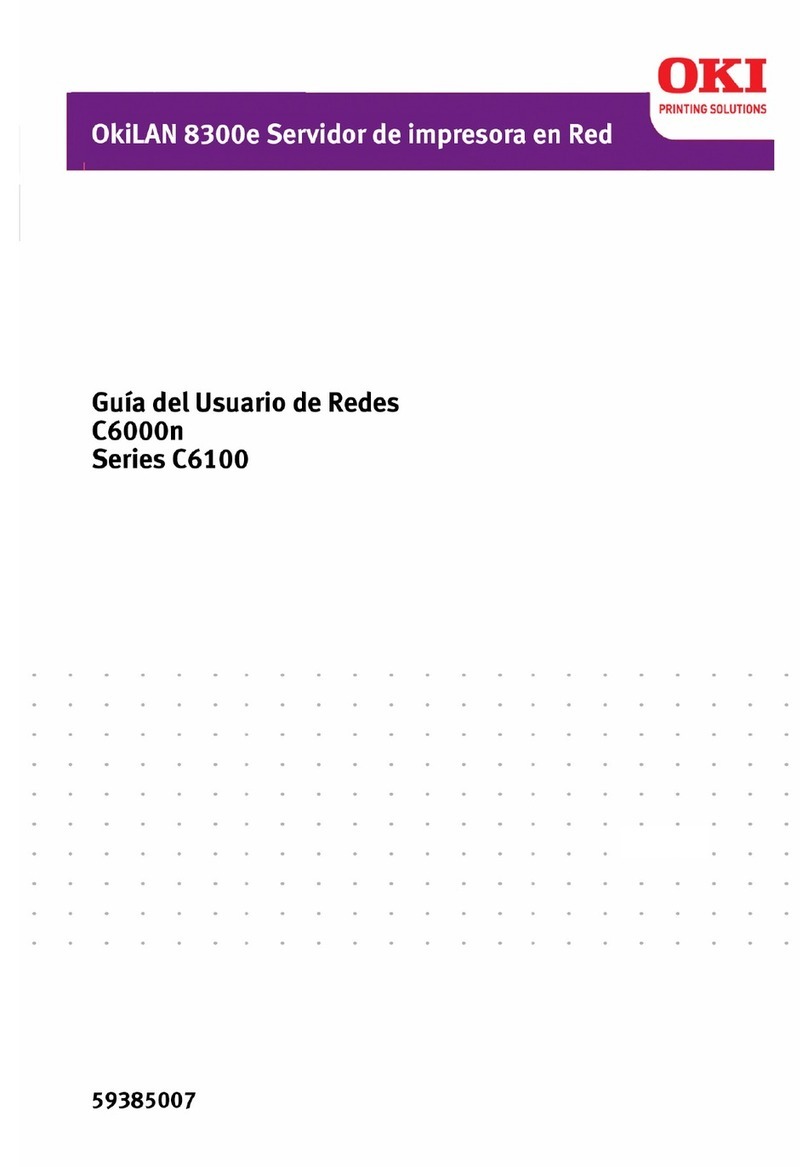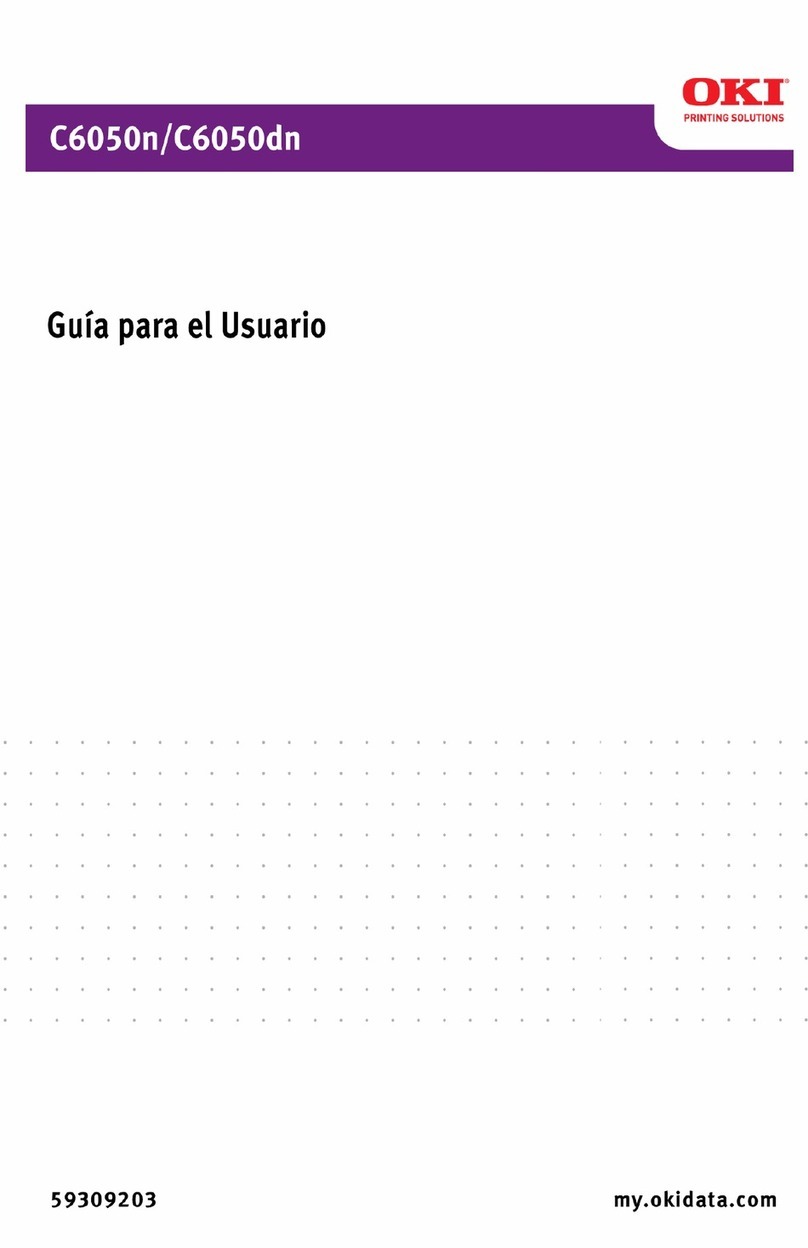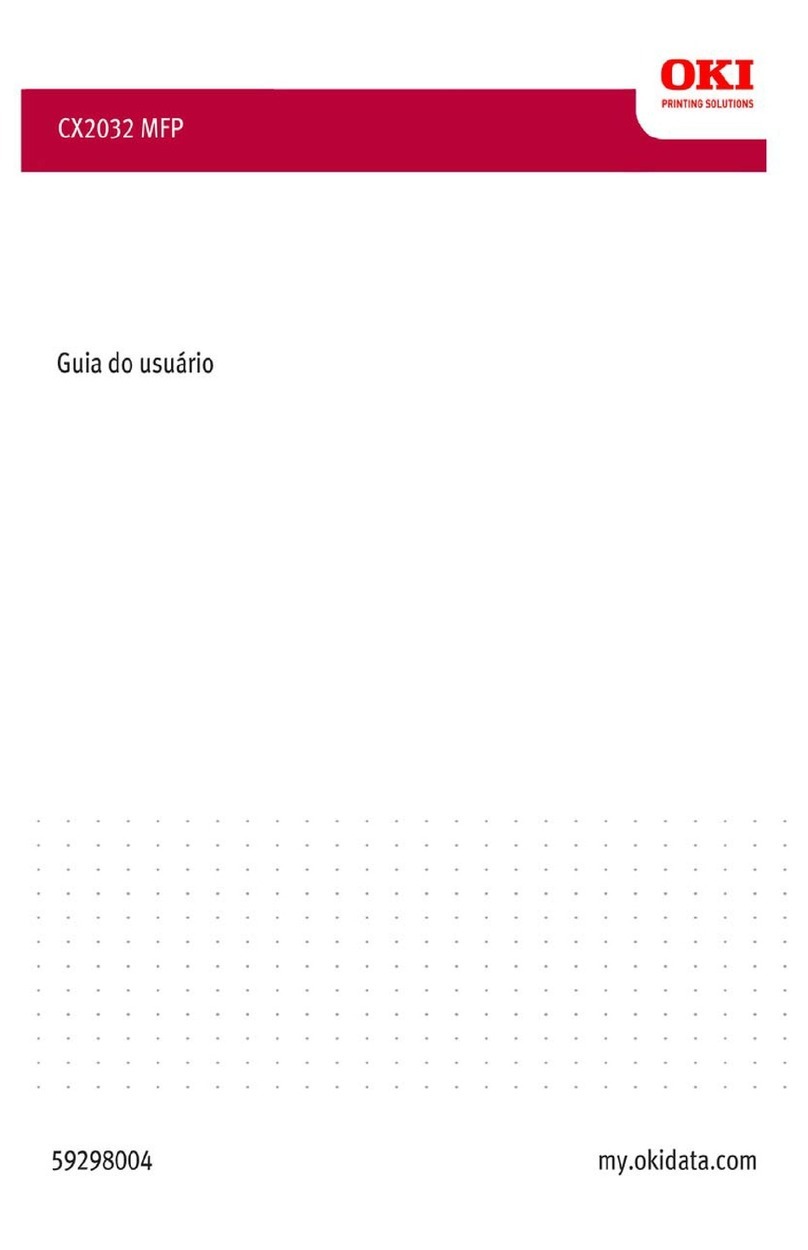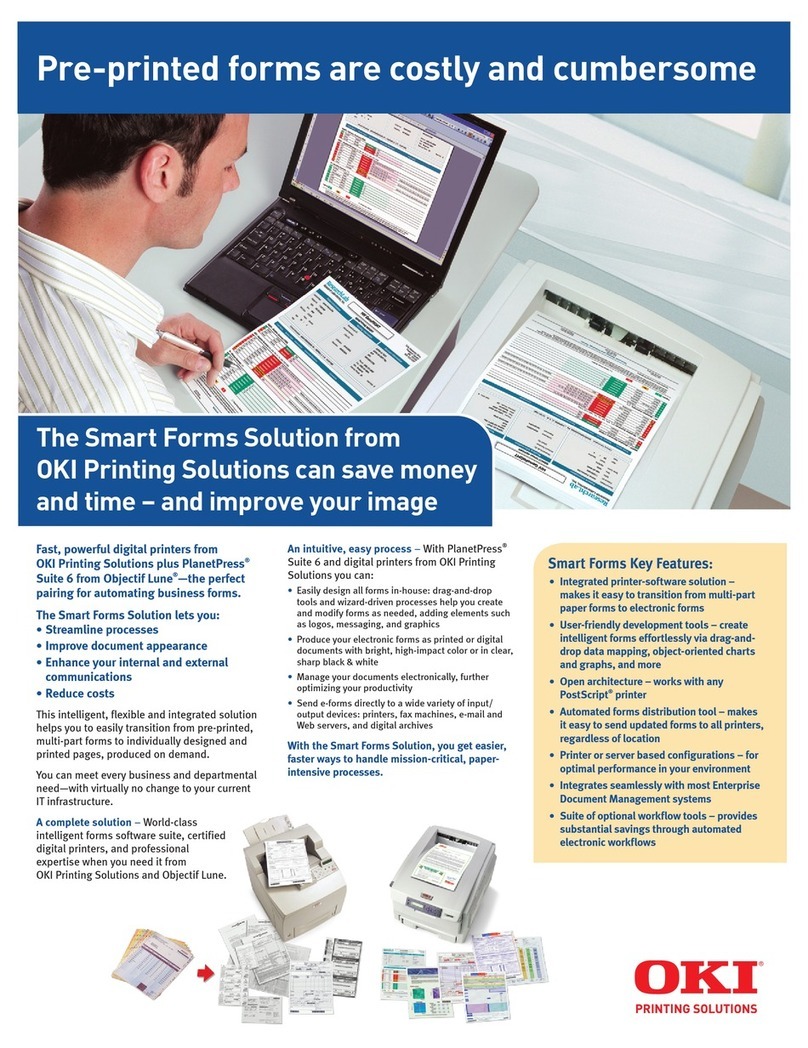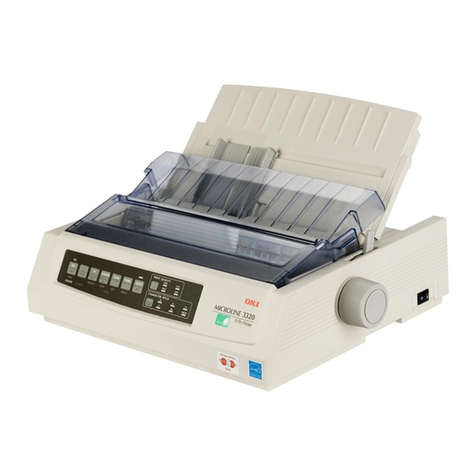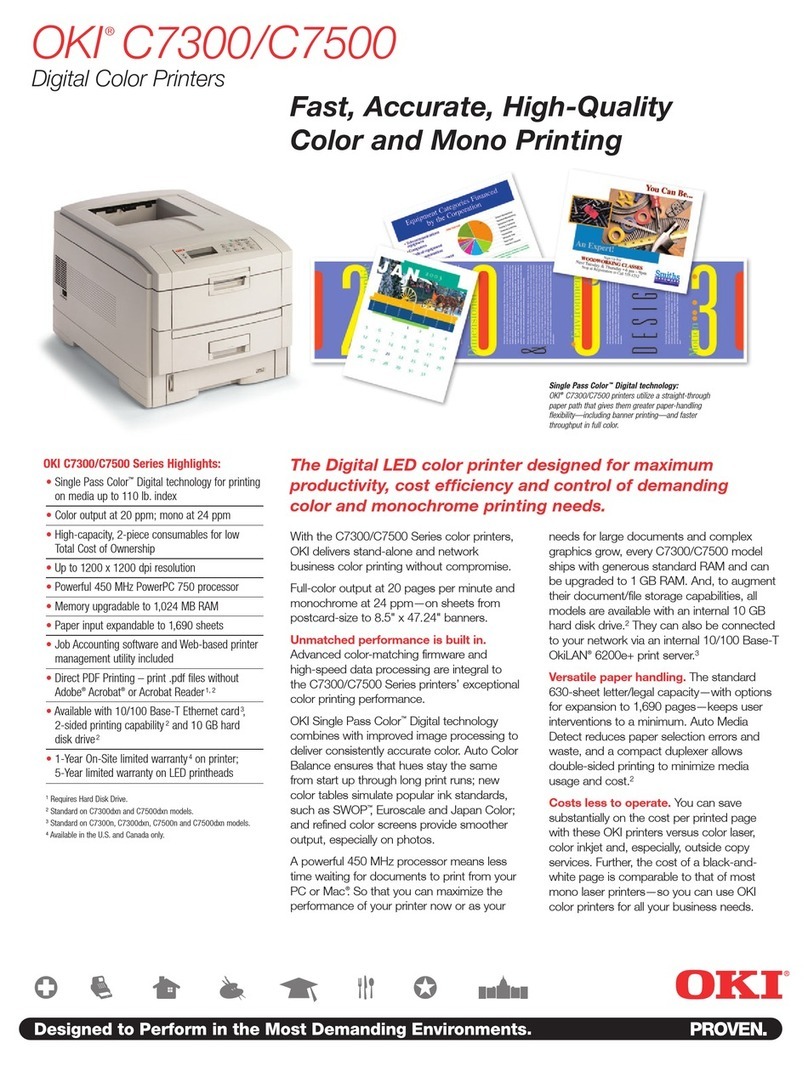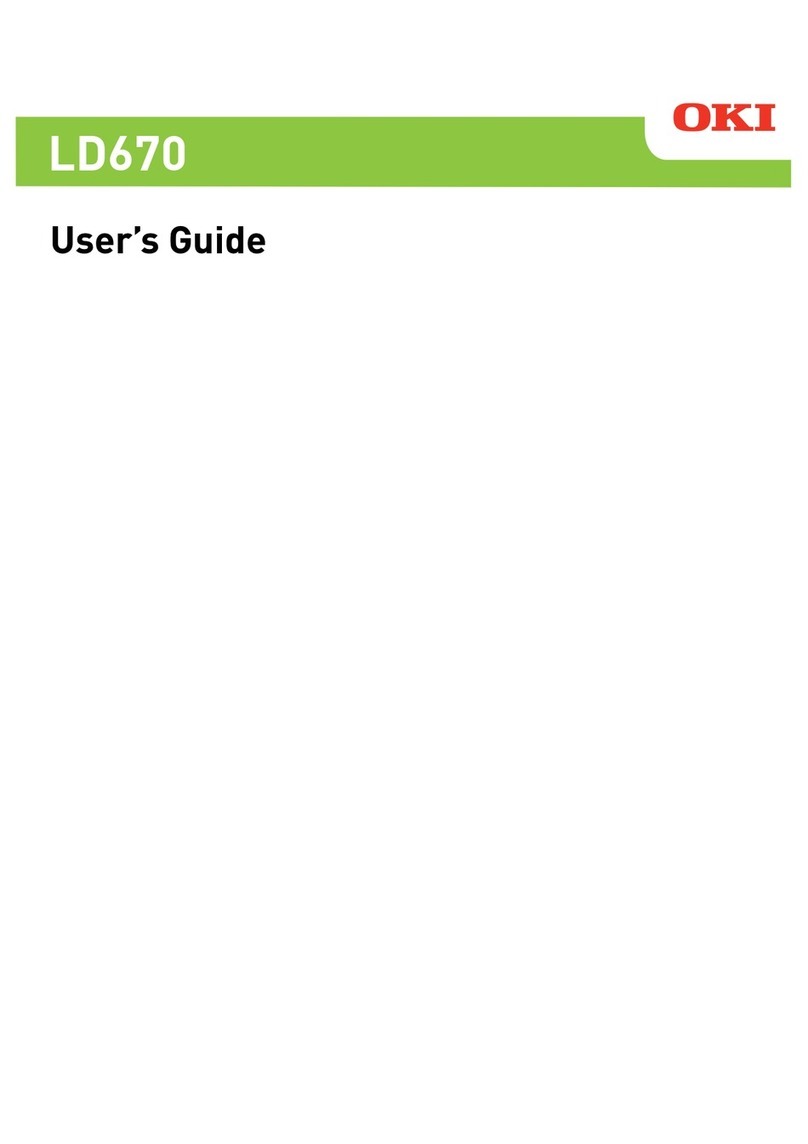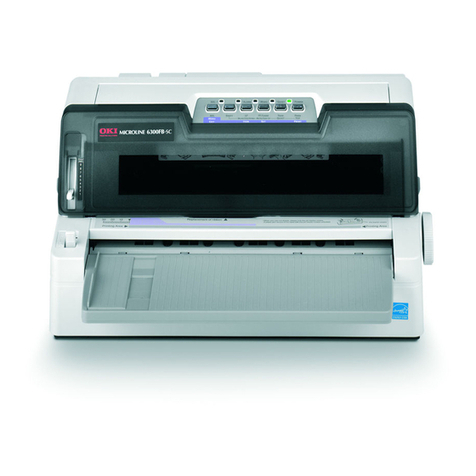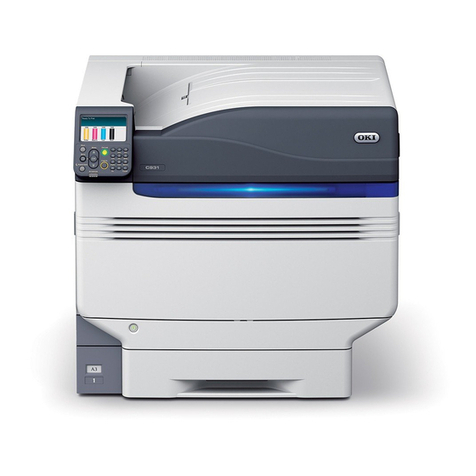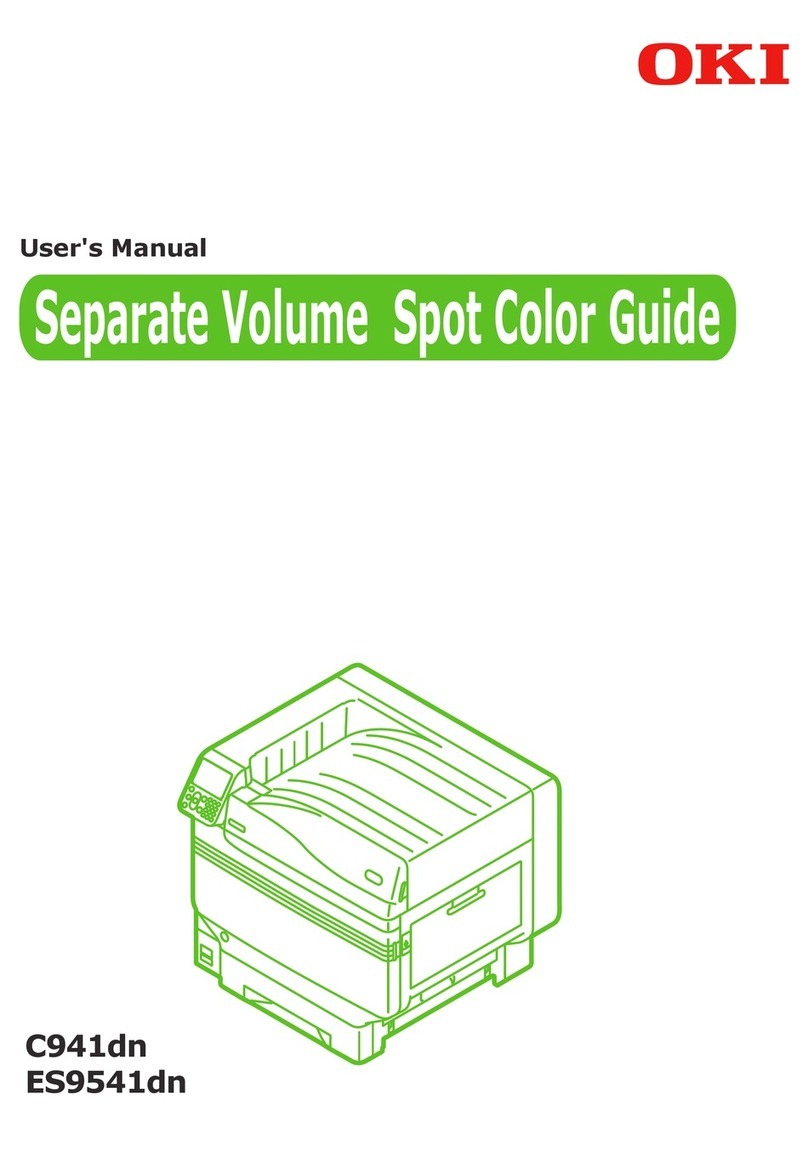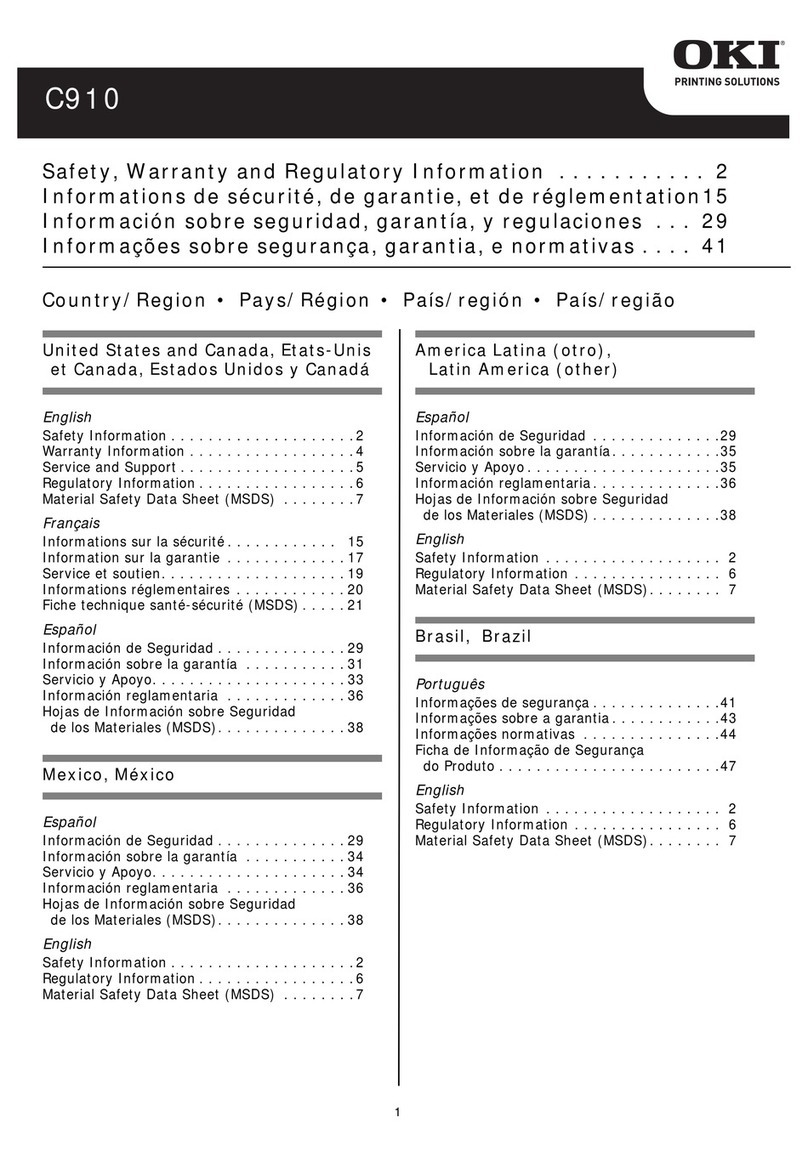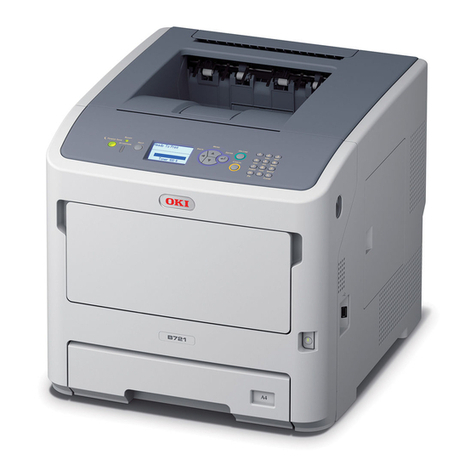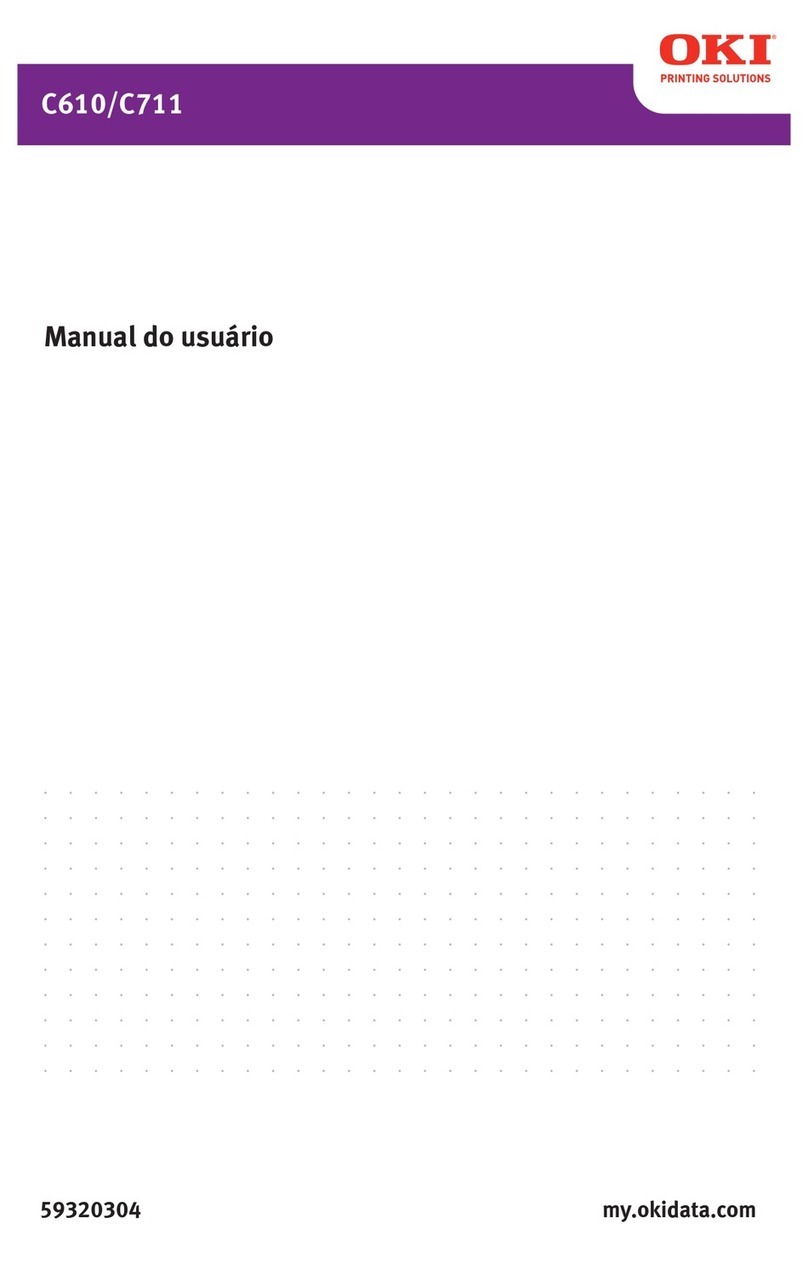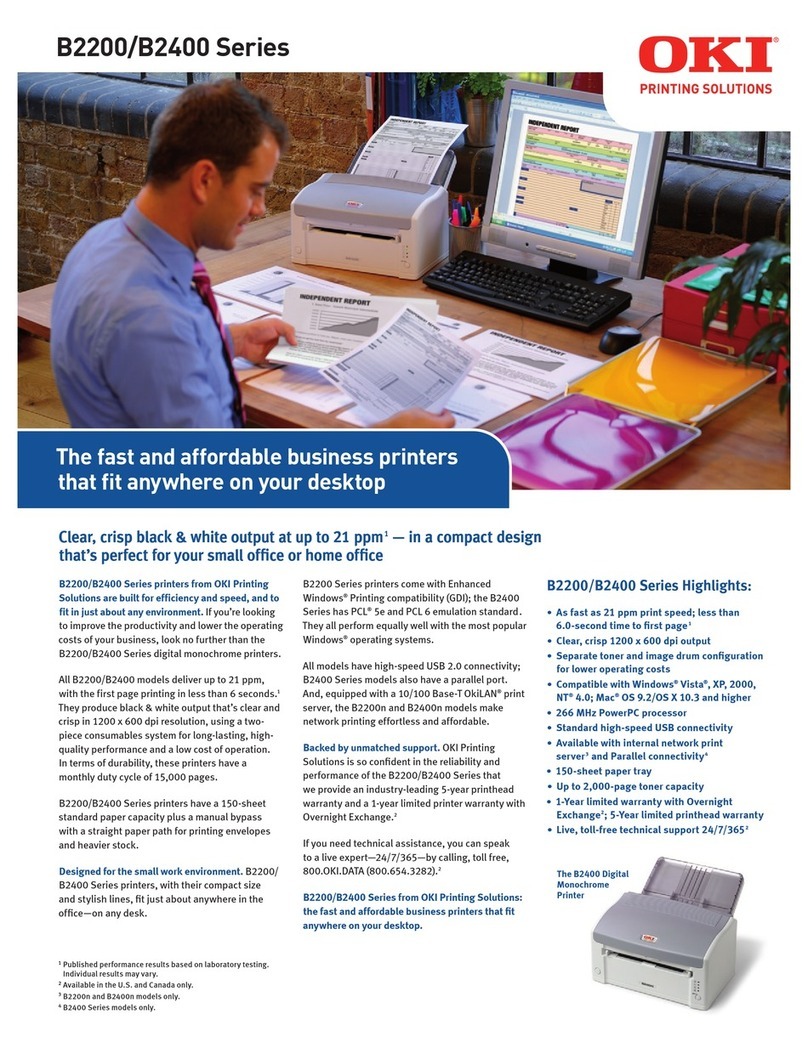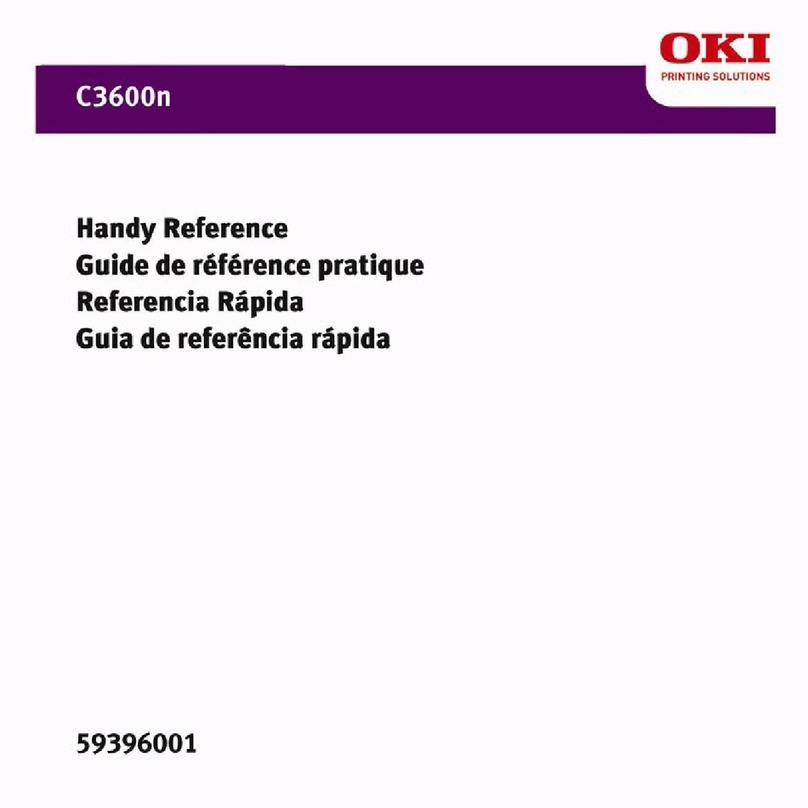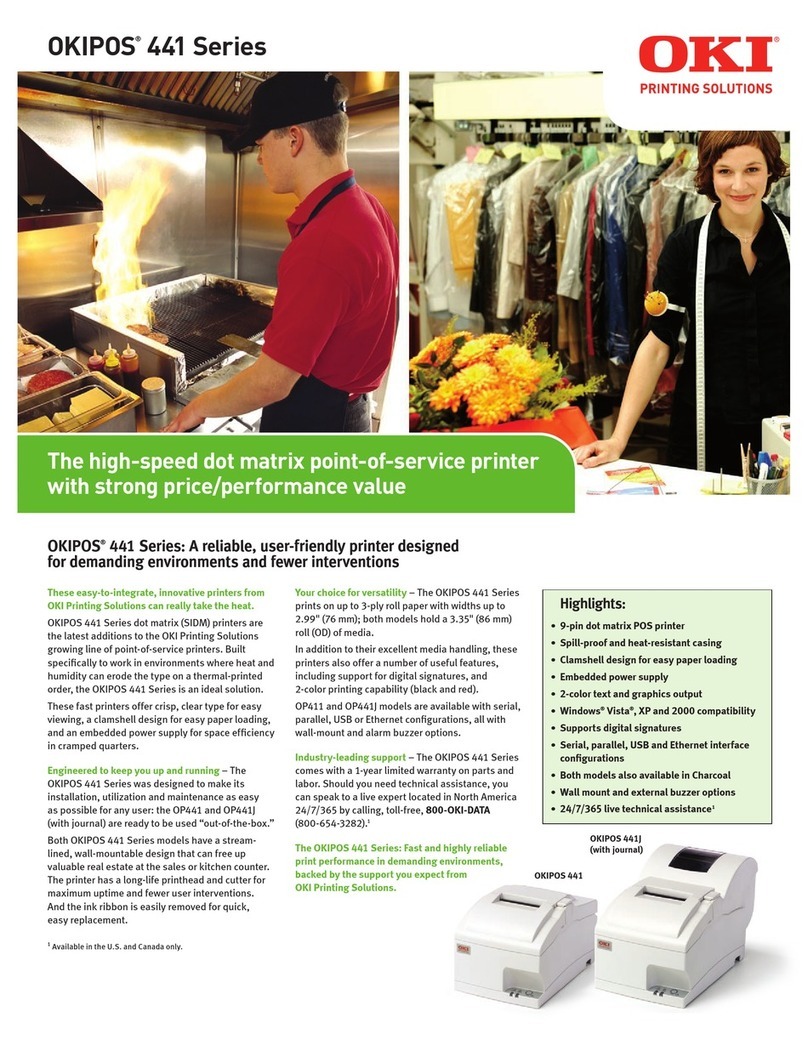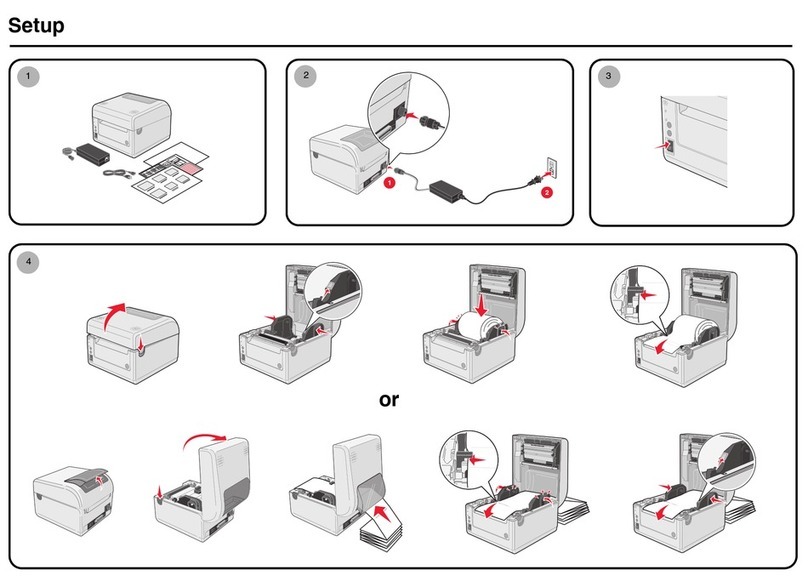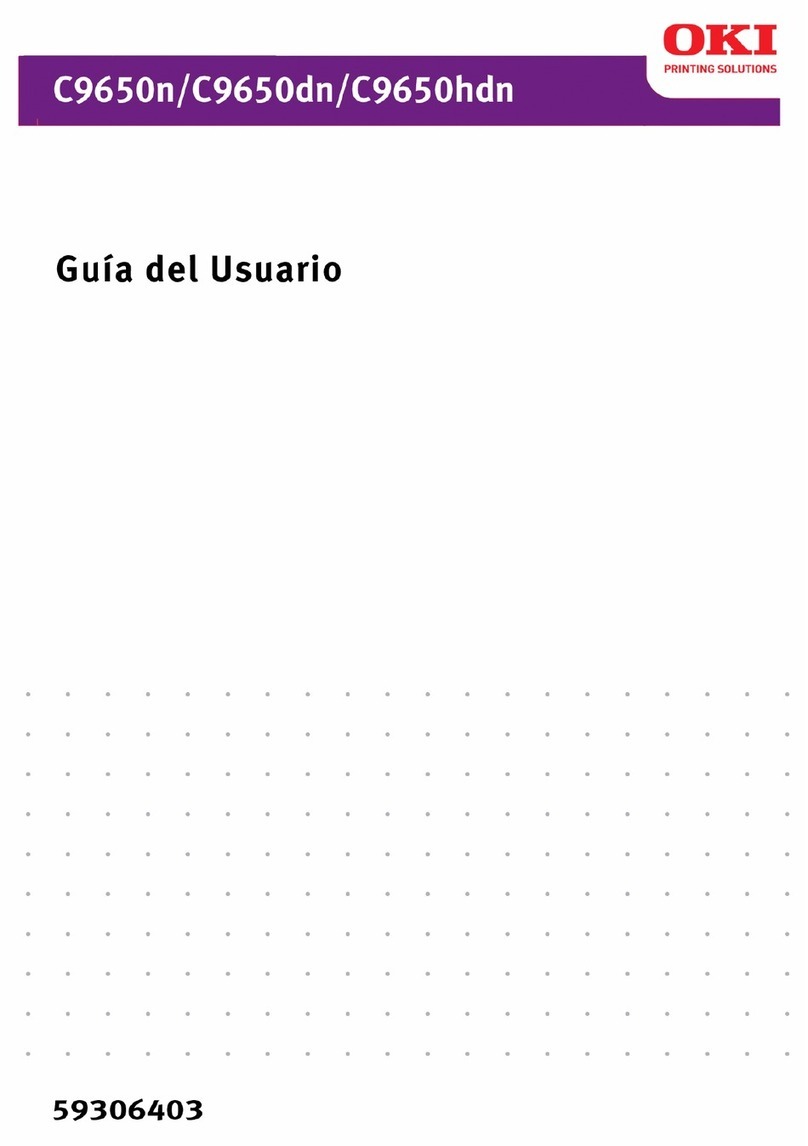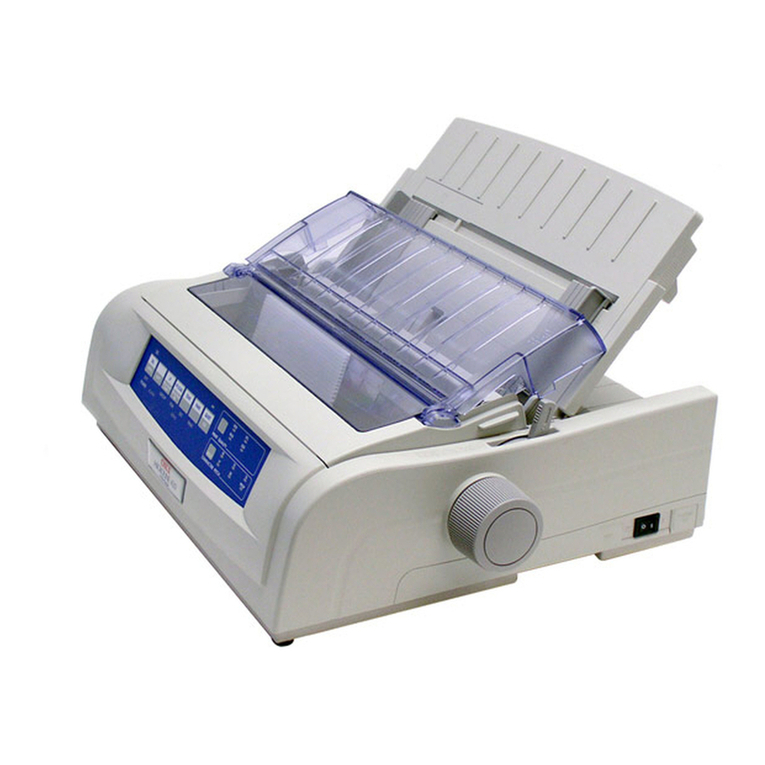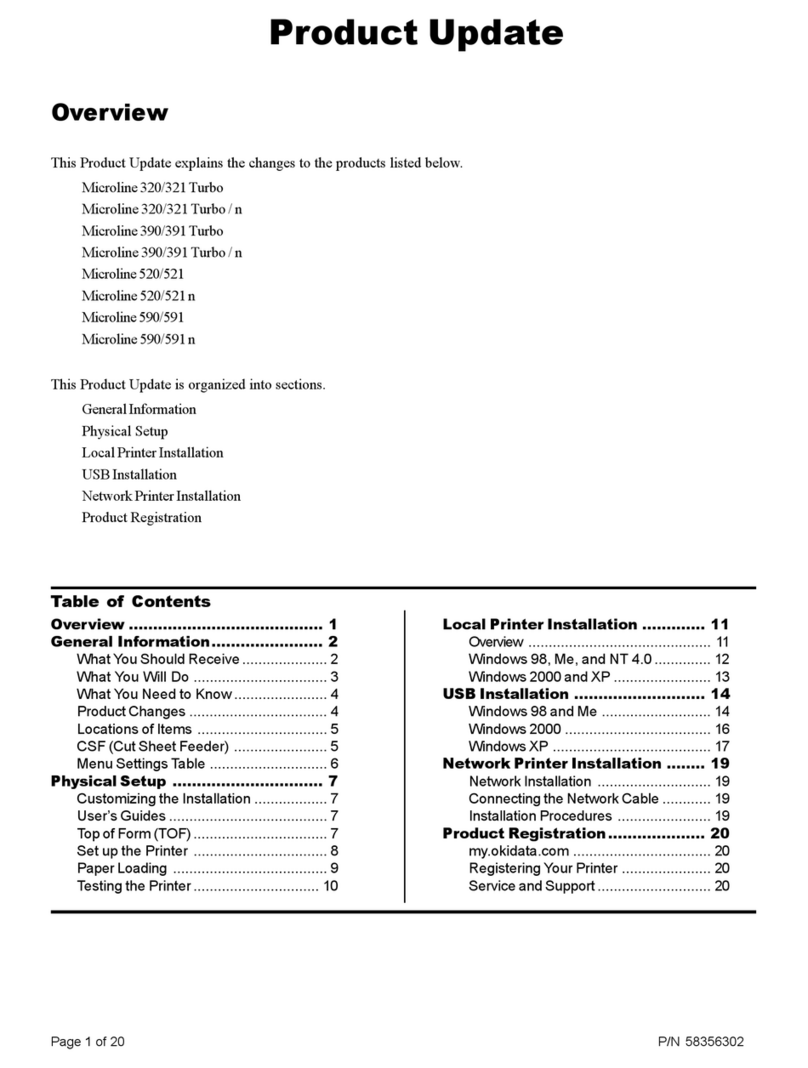
44292401TH Rev.1 5 /
Oki Data CONFIDENTIAL SAFETYAND IMPORTANT WARNING ITEMS
Read carefully the Safety and Important Warning Items described below to understand
them before doing service work.
Because of possible hazards to an inexperienced person servicing this product as well as
the risk of damage to the product, Okidata Corporation (hereafter called the ODC)
strongly recommends that all servicing be performed only by ODC-trained service
technicians.
Changes may have been made to this product to improve its performance after this Service
Manual was printed. Accordingly, ODC does not warrant, either explicitly or implicitly, that
the information contained in this Service Manual is complete and accurate.
The user of this Service Manual must assume all risks of personal injury and/or damage to
the product while servicing the product for which this Service Manual is intended.
Therefore, this Service Manual must be carefully read before doing service work both in the
course of technical training and even after that, for performing maintenance and control of
the product properly.
Keep this Service Manual also for future service.
In this Service Manual, each of three expressions " DANGER", " WARNING", and
"CAUTION" is defined as follows together with a symbol mark to be used in a limited
meaning.
When servicing the product, the relevant works (disassembling, reassembling, adjustment,
repair, maintenance, etc.) need to be conducted with utmost care.
Symbols used for safety and important warning items are defined as follows:
SAFETY AND IMPORTANT WARNING ITEMS
IMPORTANT NOTICE
DESCRIPTION ITEMS FOR DANGER,
WARNING AND CAUTION
DANGER: Action having a high possibility of suffering death or serious injury
WARNING: Action having a possibility of suffering death or serious injury
CAUTION: Action having a possibility of suffering a slight wound, medium
trouble and property damage
:Precaution when using the
copier. General
precaution Electric hazard High
temperature
:Prohibition when using the
copier. General
prohibition Do not touch
with wet hand Do not
disassemble
:Direction when using the
copier. General
instruction Unplug Ground/Earth
[1] MODIFICATIONSNOT AUTHORIZED BY OKI DATA CORPORATION
Okidata brand products are renowned for their high reliability. This reliability is achieved
through high-quality design and a solid service network.
Product design is a highly complicated and delicate process where numerous mechanical,
physical, and electrical aspects have to be taken into consideration, with the aim of arriving
at proper tolerances and safety factors. For this reason, unauthorized modifications involve
a high risk of degradation in performance and safety. Such modifications are therefore
strictly prohibited. The points listed below are not exhaustive, but they illustrate the reason-
ing behind this policy.
SAFETY WARNINGS
Prohibited Actions
DANGER
• Using any cables or power cord not specified by ODC.
• Using any fuse or thermostat not specified by ODC.
Safety will not be assured, leading to a risk of fire and
injury.
• Disabling fuse functions or bridging fuse terminals with
wire, metal clips, solder or similar object.
• Disabling relay functions (such as wedging paper between
relay contacts)
• Disabling safety functions (interlocks, safety circuits, etc.)
Safety will not be assured, leading to a risk of fire and
injury.
• Making any modification to the product unless instructed
by ODC
• Using parts not specified by ODC
SAFETY AND IMPORTANT WARNING ITEMS
IMPORTANT NOTICE
SAFETYWARNINGS
DESCRIPTION ITEMS FOR DANGER,
WARNING AND CAUTION
[1] MODIFICATIONSNOT AUTHORIZED BY OKI DATA CORPORATION
Okidata brand products are renowned for their high reliability. This reliability is achieved
through high-quality design and a solid service network.
Product design is a highly complicated and delicate process where numerous mechanical,
physical, and electrical aspects have to be taken into consideration, with the aim of arriving
at proper tolerances and safety factors. For this reason, unauthorized modifications involve
a high risk of degradation in performance and safety. Such modifications are therefore
strictly prohibited. The points listed below are not exhaustive, but they illustrate the reason-
ing behind this policy.
SAFETY WARNINGS
Prohibited Actions
DANGER
• Using any cables or power cord not specified by ODC.
• Using any fuse or thermostat not specified by ODC.
Safety will not be assured, leading to a risk of fire and
injury.
• Disabling fuse functions or bridging fuse terminals with
wire, metal clips, solder or similar object.
• Disabling relay functions (such as wedging paper between
relay contacts)
• Disabling safety functions (interlocks, safety circuits, etc.)
Safety will not be assured, leading to a risk of fire and
injury.
• Making any modification to the product unless instructed
by ODC
• Using parts not specified by ODC
